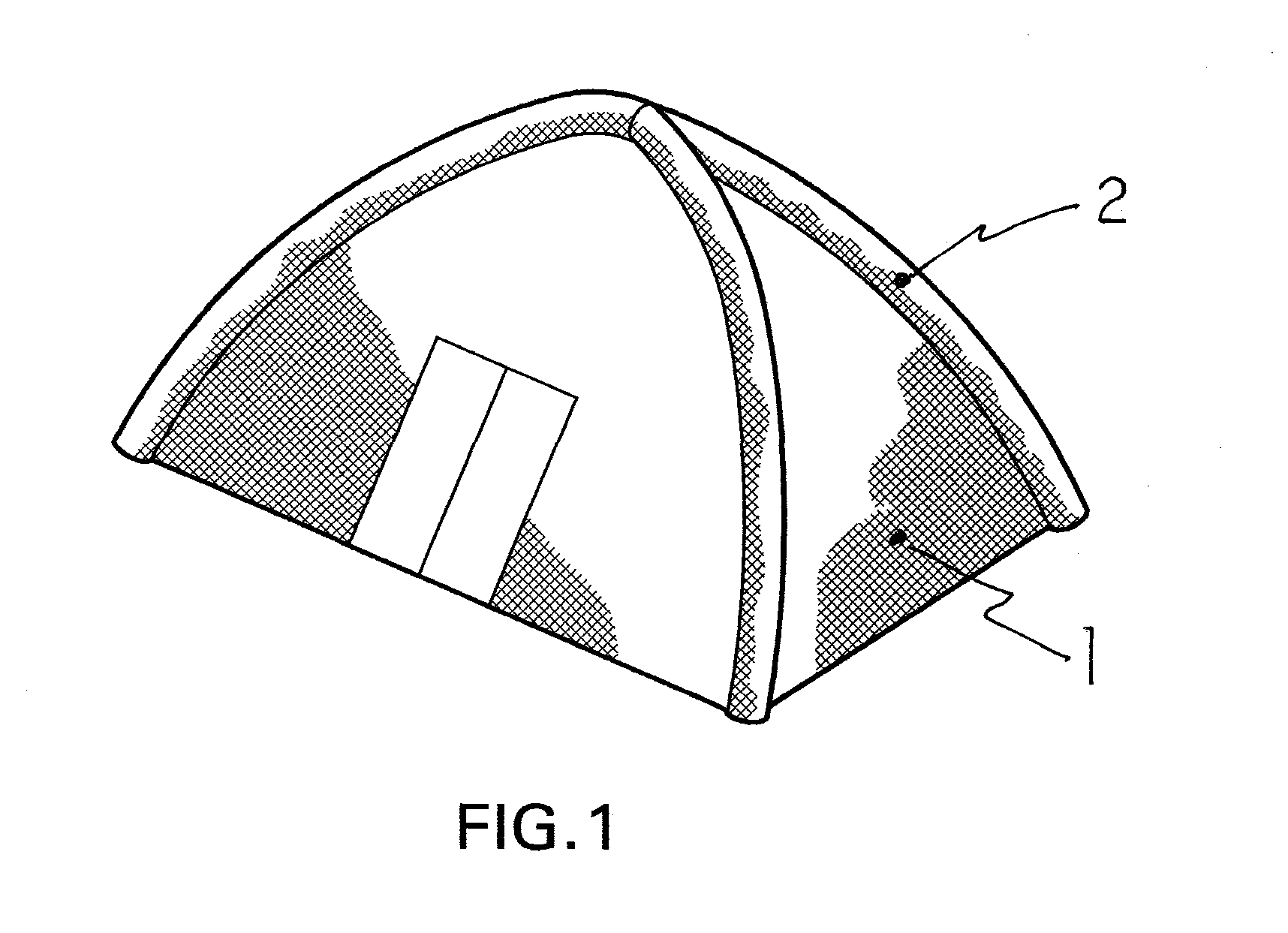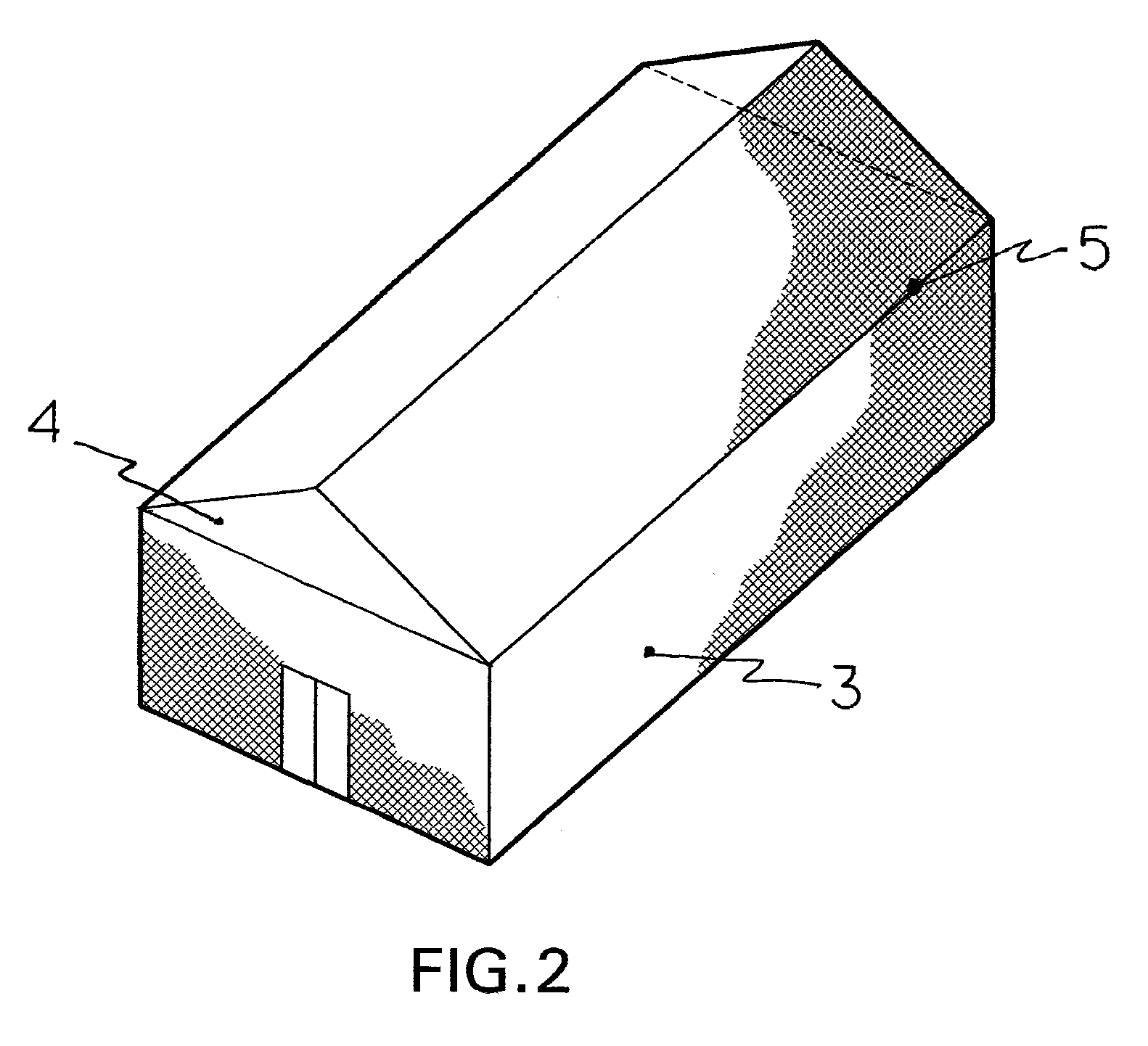[0009]The objective of the present invention is to provide a layered panel and an assembled
habitat enclosure system comprised of an
assembly of said panels with
solar energy panels to absorb
solar energy and transform it into
electric energy via a solar energy to
electric energy switching device, thereby providing a power supply. For achieving the above objective, the invention combines new light weight and structurally flexible organic panels, more particularly described below, said panels having three
layers, said layers comprising an exterior solar photovoltaic layer, a light weight and structurally flexible middle layer of thin batteries, and an interior layer of thin organic structurally flexible
light emitting diode (“
OLED”) film, said OLED's comprising the actual interior wall of said habitat enclosure system. A
microprocessor based
integrated circuit energy management system providing monitoring, safe and proper functioning of the electrical energy produced, stored and distributed for the individual multi-layered panels and / or the entire panel assembled habitat enclosure system.
[0010]On the exterior layer of the layered panels, this invention uses new lightweight, structurally flexible, solar cells made of organic materials; i.e. cells based on polymers with carbon bonds. Currently, organic semi-conductors include not only polymers [molecular
mass greater than 10,000 AMU (
atomic mass units)], but also small molecules (molecular
mass less than a few thousand AMU), and dendrimers (molecular masses between the polymers and small molecules). Organic solar cells work differently from conventional inorganic
semiconductor solar cells. Light absorbed by an inorganic semiconductors produce free charge carriers—electrons and holes—that are transported separately through the
semiconductor material. In an
organic solar cell, however, light absorption produces excitons,
electron-hole pairs that are bound together and hence not free to move separately. To generate free charge carriers, the excitons must be dissociated. This can happen in the presence of high electric fields, at a defect site in the material, or usually, at the interface between two materials that have a sufficient mismatch in their energy levels. Thus, an
organic solar cell can be made with the following
layered structure: positive
electrode /
electron donor /
electron acceptor / negative
electrode. An
exciton created in either the
electron donor or
electron acceptor layer can diffuse to the interface between the two, leading to
electron transfer from the donor material to the
acceptor, or hole transfer from the
acceptor to the donor. The negatively charged electron and the positively charged hole is then transported to the appropriate
electrode. Organic materials are diverse and versatile, offering endless possibilities for improving a wide range of properties such
charge generation, separation, molecular
mass, wettability between
organic molecules and inorganic material, the ability to harvest light efficiently in different parts of the solar spectrum, especially the
infrared, molecular energy levels, rigidity, and molecule-to-molecule interactions. Different
organic molecules can be combined with one another, or with
inorganic materials in many unique formulations. One major
advantage of organic solar panels is the low cost involved in manufacture.
Organic molecules are cheap to make, they can have very high light absorbing capacity so that films as thin as several hundred nanometres would be sufficient for the purpose. Organic materials are compatible with plastic and other flexible substrates; and devices can therefore be fabricated with low-cost, high
throughput printing techniques that consume less energy and require less
capital investment than silicon-based devices and other thin-film technologies. Consequently, organic solar cells do not need to have conversion efficiencies as high as thin-film inorganic solar cells to become competitive in the market. Another
advantage of these cells is that they are good for high latitudes. They do not have the
reflectivity of
inorganic materials such as silicon, which allows them to have greater conversion efficiency when the sun is at high angles relative to the
cell.
 Login to View More
Login to View More  Login to View More
Login to View More 


